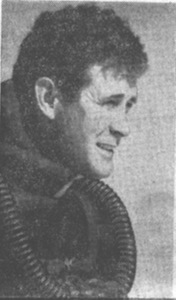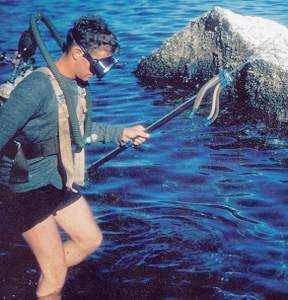As Stacy stated in our last journal, the goal of ICE AGED is to get information in order to understand how a balanced ecosystem works. We want to show how organisms interact with each other and their physical environment in the last remaining location that does not have drastic interference from humans. By using new technology, we will revisit 47-year old study sites and gather together a wealth of information that will help future researchers balance our planet’s disturbed interconnections of communities and their environment.
Paul Dayton was one of the original researchers that first went under the ice in Antarctica in the mid 1960s. Being an “aged SuperHuman”, he states, “If you only have the one life, you really want to spend it doing things that you love.”

He describes his first Antarctic dives beautifully in this YouTube video. As you watch it, think about what he has to say about the cold and the visibility under the ice.
Do you think you would forget the cold like he did?
Can you imagine SCUBASelf Contained Underwater Breathing Apparatus diving with such visibility?
What, in your opinion, is your perfect job?
Back to ICE AGED, Paul recently stated that "the transects [paths where they recorded and counted organisms] in the 1960s were simply done to get data on the predators. In order to evaluate changes over time, one needs to look at the same individuals and that involves establishing permanent sites so that the growth and survivorship or particular individuals can be studied. For this reason permanent transects were established in 1974."
More specifically, in the 1960s, Paul measured the densities, size frequency distributions, and diets of predators at McMurdo Sound. His studies showed that the growth rates of many sponges in Antarctica are too slow to measure in one year. They don't grow fast enough! He also found that predator impacts on prey populations cannot be studied in one year as predators have very slow consumption rates - they don't eat fast enough for us to study them in a short period of time! These are some of the reasons that our data, which will span more than 40 years, will be so insightful and valuable.
In another Youtube video, Paul discusses how we now have improved technology, SCINI, with which we can study the bottom of the ocean.
As you watch this video, think about these questions:
What are the two advantages of SCINI that Paul mentions in the video?
What else did he look at in the 1960s and 70s?
Thanks to our engineers, we have SCINI which, as Paul states, goes much deeper than divers can go and which goes into ice conditions that would be too dangerous for divers. In our upcoming journals, you’ll soon learn much more about the history and advantages of SCINI.
In the YouTube, you also heard how Paul studied larval settlements 40 years ago. He observed where young creatures made their homes. What has become of these organisms? Will we study their “grandkids” or will we see the “grown-up” versions of the creatures that Paul saw over 40 years ago?
We will see.

Paul leaves us with these words about our upcoming expedition:
"It has been over 20 years since I was there and in fact I am very excited to see the stuff. I have seen Stacy's and Andrew Thurber's pictures so I sort of know what to expect, but it will be awfully nice to see the video images and to collect panels from the old cages and settling plates. I think that the collections of animals alone will be extremely valuable and I am very grateful for the opportunity to be allowed to return to McMurdo."


Comments